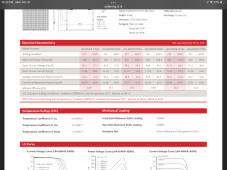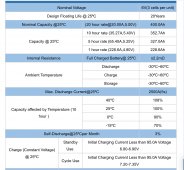Newfiejeff
New Member
- Joined
- Apr 12, 2022
- Messages
- 131
I have a new 12 volt system:
Xantrex XC2000 inverter/charger
Victron Energy 150/85 charge controller
Two 6 volt 400AH lead carbon batteries
Two Longi 355 watt solar panels and One Longi 350 watt solar panel all connected in series
Question:
1) I have starting in the fall as the sun gets lower in the sky partion shading from some branches no on all of them at once but one at a time as the sun moves across. I am going to move them next year but wondering in series is that ok or should I connect in parralel?
2) It seems that I yield about 1500 to 2000 watts a dead to float the batteries. Based on my system how many more batteries should I get?
3) I had a small bar fridge running all summer and no issues but was yielding about 3000 watts, but since less sun I disconnected it.
4) What should I change/add,etc to my existing system to make it that much better?
I welcome all feedback
Xantrex XC2000 inverter/charger
Victron Energy 150/85 charge controller
Two 6 volt 400AH lead carbon batteries
Two Longi 355 watt solar panels and One Longi 350 watt solar panel all connected in series
Question:
1) I have starting in the fall as the sun gets lower in the sky partion shading from some branches no on all of them at once but one at a time as the sun moves across. I am going to move them next year but wondering in series is that ok or should I connect in parralel?
2) It seems that I yield about 1500 to 2000 watts a dead to float the batteries. Based on my system how many more batteries should I get?
3) I had a small bar fridge running all summer and no issues but was yielding about 3000 watts, but since less sun I disconnected it.
4) What should I change/add,etc to my existing system to make it that much better?
I welcome all feedback





